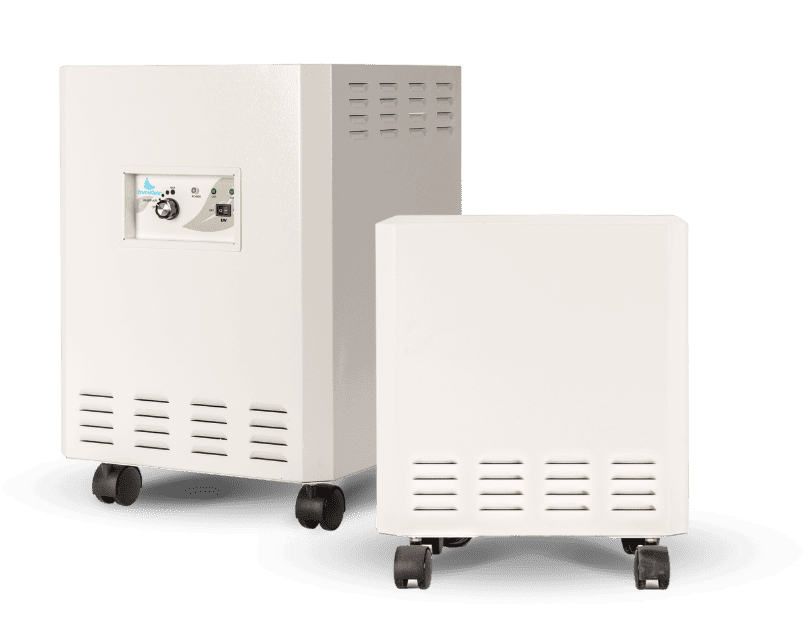According to the World Health Organization, one-third of deaths from heart disease, lung cancer, and stroke are directly linked to air pollution. The statistics are unsettling, considering most people worldwide now breathe polluted air.
However, you can keep tabs on your indoor air quality to reduce symptoms associated with poor IAQ.
This quick guide gives you a heads-up on the common air pollutants and poor air quality symptoms to look out for. We also recommend practical ways to reduce pollutant exposure and protect your health.
Common Air Pollutants
Around seven million people across the world lose their lives every year due to breathing polluted air. Considering the high death rate, becoming aware of the common air pollutants and their sources is a no-brainer.
The most common pollutants include:
- Carbon Monoxide: This colorless, odorless gas is one of the most prevalent causes of poor air quality in indoor and outdoor environments and can displace oxygen in the blood. It is formed when fuel combustion is incomplete, and this can happen through many sources, including wood and gas fireplaces, grills, furnaces, gas stoves, wood stoves, water heaters, clothes dryers, cars, and more.
- Fine Particles: Soot, particulate matter, or simply fine particles are tiny particles of dust, smoke, allergens, and chemicals in the air. These are very tiny; they can easily get into the lungs and cause heart and lung problems. Common sources of fine particles include burning candles, tobacco smoke, space heaters, and cooking (particularly sautéing, frying, or broiling).
- Nitrogen Dioxide: This pungent chemical compound is formed primarily by the burning of fuels in cars. Stoves and heaters (gas and kerosene) are also common sources of this toxic gas.
- Ground-Level Ozone: Commonly known as smog, ground-level ozone is produced when sunlight reacts with emissions from burning fossil fuel in vehicles and other gas-powered equipment.
- Sulfur Dioxide: This pollutant is formed by burning oil, coal, and other fossil fuels. Common sources of sulfur dioxide include cement manufacturing, metal smelting, and petroleum refineries.
Health Effects of Poor Air Quality

1. Shortness of Breath, Coughing, and Wheezing
Pollution caused by fine particles and ground-level ozone can lead to air hunger (or shortness of breath), coughing, and wheezing. In some cases, prolonged exposure to these pollutants may result in sore throat, chest pain, and frequent unexplainable fatigue.
2. Asthma Attacks
Continuous exposure to particle pollution and ground-level ozone is a leading cause of asthma attacks.
Besides asthma, particle pollution may lead to lung cancer ― one of the major causes of cancer-related deaths in the United States.
3. Lung Tissue Irritation
Breathing nitrogen dioxide, sulfur dioxide, and carbon monoxide can irritate the eyes, throat, and respiratory tract. These gases increase vulnerability to cardiovascular disease.
Children are most at risk of developing lung infections when exposed to poor air quality. And higher levels of carbon monoxide (40% or more) can cause poisoning and may lead to death, regardless of age.
4. Increased COPD Symptoms
People with Chronic Obstructive Pulmonary Disease (COPD) will experience more difficulty breathing if exposed to air pollution. In some cases, worsened COPD symptoms can lead to time in the emergency unit and may result in patients losing their lives.
Reducing Exposure to Pollutants and Poor Air Quality Symptoms
Outdoor Air Pollution
Reducing pollutants in the atmosphere is undoubtedly an arduous task that calls for input from individuals, businesses, and governments.
On your part, though, you can protect your health by limiting exposure to emissions from vehicles since it is one of the major sources of air pollution. Avoid walking beside busy roads whenever possible, as this will reduce the level of harmful gasses you inhale.
Reduce the use of gas-powered equipment (such as generators and lawnmowers) and avoid burning bushes, as wildfire smoke pollutes outside air and drifts into your home.
Indoor Air Pollution
No matter your best effort, it is nearly impossible to completely eliminate air pollution in outdoor spaces. You have more control indoors, especially in your home or office.
While limiting your time indoors may not be practical, you can improve the air quality in your living areas to reduce the effects of poor air quality.
One of the best ways to do this is by installing an air cleaner or purifier like the EnviroKlenz Air System Plus. This high-quality air purification system is designed to remove household pollutants such as cooking odors, smoke chemicals, and pet dander that can contribute to poor air quality symptoms. The air purifier effectively captures and eliminates 99.9% of viruses, bacteria, and other harmful particulates.
In addition to using air purifiers, ensure adequate ventilation in buildings to reduce the buildup of mold, dust, and pollen, which can trigger allergies and increase respiratory problems. Remember to regularly test the air quality in your home to stay on top of VOCs, unusual odors, and the health effects of poor IAQ.
Protecting Your Health
For many people, outdoor air readily comes to mind when they think of air pollution, but indoor air tends to be more polluted than the air outside in many cases. And most people spend a significant part of their day indoors ― in their home, office, or building. These living spaces often have higher pollutant concentrations, thanks to their confined nature.
More worrisome is that those likely to spend more time indoors are most vulnerable to poor air quality effects. These include pregnant women, older adults, young children, and people with respiratory concerns or cardiovascular problems.
Regardless of your health status, you should take steps to protect yourself and your family by improving the indoor air quality in your home, office, and other living spaces. Consider installing one of our air purifier systems to keep your indoor space pollutant-free and minimize poor air quality symptoms. If you already have an air purifier, ensure it is always in good working condition for maximum protection.
EnviroKlenz® Medical Disclaimer:
“Any information that is provided on this website is not for the use by any commercial or personal entity without expressed written consent of the blog author. The material and statements illustrated within this blog are not intended to diagnose, treat, cure, or prevent any diseases or medical conditions. Nor does the author in any way guarantee or validate the validity, totality, or efficacy of any claims and will therefore not be held responsible for the content of any claims. Always consult your medical physician for any specific medical advice or recommendations.”









